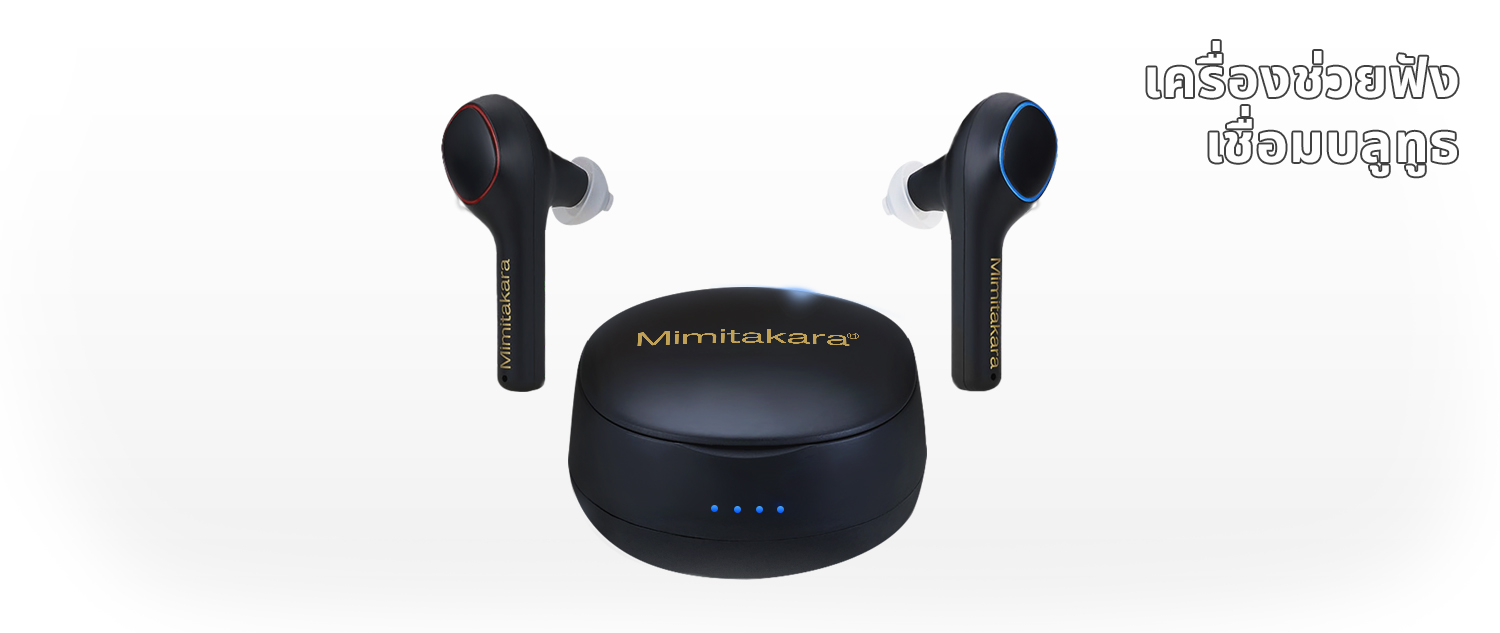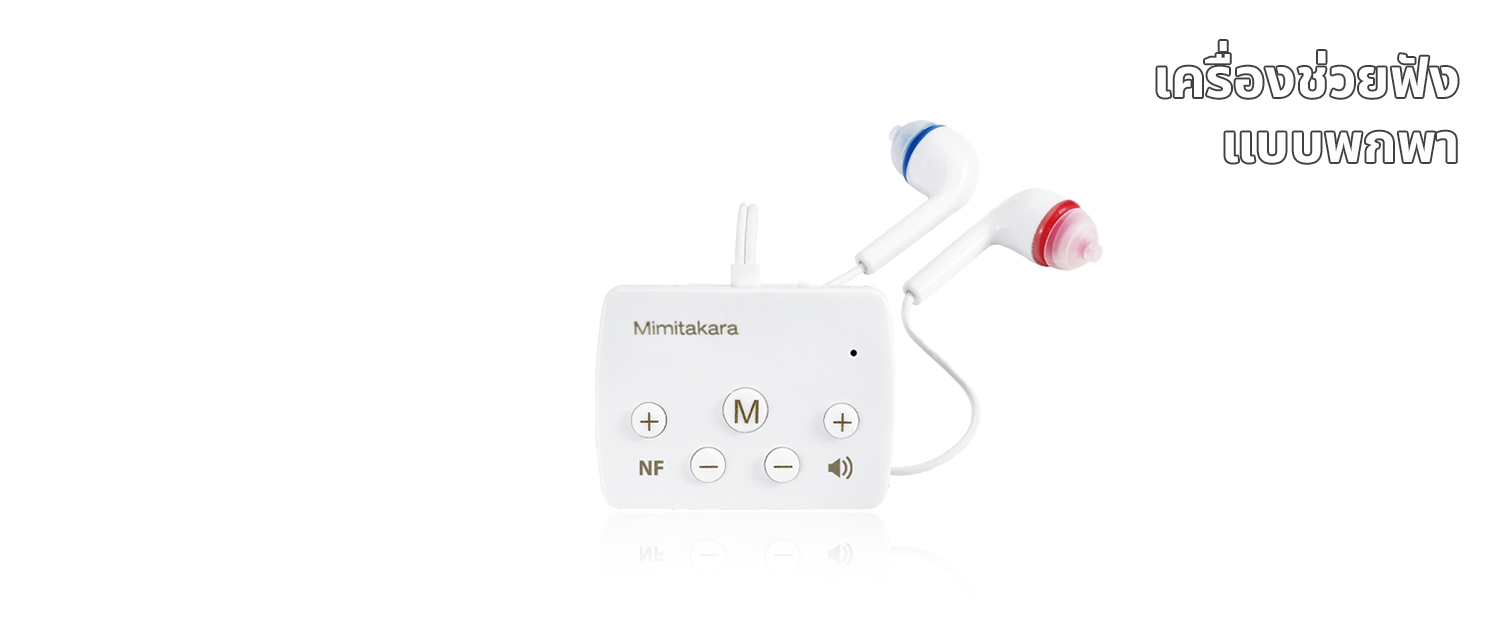
With the advancement of technology, hearing aids have become increasingly modern in appearance. During the selection process, people often ask, “Is there a hearing aid that is the smallest, best, and completely hidden in the ear?” The answer is “yes.” However, whether a smaller hearing aid is suitable for everyone depends on the degree of hearing loss, the size of the ear canal, and the functions of the device.
Therefore, when choosing a hearing aid, an audiologist will provide professional advice based on the user’s hearing level and individual needs. The decision should not rely solely on personal preference. As for hearing aid styles, the most common types currently in use are as follows:
Behind-the-Ear Hearing Aids (BTE: Behind the Ear)
BTE hearing aids are worn behind the ear, with a sound tube connecting the device to an ear mold or ear dome that delivers sound into the ear canal. This type of hearing aid is suitable for individuals with mild to severe hearing loss.
Because BTE devices have more space, they can accommodate additional advanced features such as a telephone coil (T-Coil), directional microphones, and a Direct Audio Input (DAI) function. They are also a great option for children with hearing loss, as they can be used as educational assistance devices.
Advantages of BTE hearing aids:
Provide powerful amplification, making them suitable for users with severe hearing loss.
Larger components make them easier to handle, such as when changing batteries or adjusting the volume.
The microphone and receiver are positioned farther apart, reducing the chance of feedback or whistling sounds.
Support a wide range of advanced features such as directional microphones, T-Coil, and DAI.
BTE hearing aids are also recommended for children, since their ear canals are still growing, making in-ear models unsuitable. Additionally, they are ideal for individuals with chronic otitis media (chronic ear infections), as ear discharge can easily damage in-ear hearing aids.
Receiver-in-Canal Hearing Aids (RIC: Receiver in the Canal)
RIC hearing aids have become increasingly popular in recent years due to their sleek and compact design. The receiver (speaker) is connected to the hearing aid by a thin wire and placed directly inside the ear canal. This design not only reduces the visible size of the device compared to traditional behind-the-ear models but also allows users to choose receivers with different output power levels to suit various degrees of hearing loss.
Therefore, RIC hearing aids are suitable for individuals with mild to severe hearing loss. Users with mild hearing loss can use an open-fit dome for a more natural sound experience without feeling plugged up, while those with more significant hearing loss can use closed-fit domes or custom ear molds. Regardless of hearing level, users can still enjoy the benefits of a small, discreet, and high-performance behind-the-ear hearing aid.

In-the-Ear Hearing Aids (ITE: In the Ear)
In-the-ear hearing aids are custom-made to fit the unique shape of each user’s ear canal. The outer portion of the device is much less noticeable than behind-the-ear models, offering a more discreet appearance. In addition to their aesthetic advantage, the speaker is positioned closer to the eardrum, allowing for effective sound delivery without requiring high volume levels.
However, compared to behind-the-ear hearing aids, ITE models have limited internal space, which restricts the power output of the speaker and additional features. Therefore, they are generally not suitable for individuals with severe or profound hearing loss. Furthermore, their small size can make them more difficult to handle, especially for users with dexterity issues.

In-the-Canal Hearing Aids (ITC: In the Canal)
ITC hearing aids are smaller than in-the-ear (ITE) models and are worn within the cartilaginous portion of the ear canal. Their discreet design makes them less visible than ITE styles, providing a more subtle appearance. However, due to their smaller size, they have limited power and fewer features. ITC hearing aids are best suited for individuals with mild to moderate hearing loss.

Completely-in-the-Canal Hearing Aids (CIC: Completely in the Canal)
This model fits deeper into the ear canal and is barely visible from the outside, with only a small transparent pull string extending outward for easy removal. The main advantage of CIC hearing aids is their discreet appearance. Additionally, because they sit deeper in the ear canal, they offer higher amplification, reduce the occlusion effect, are less prone to earwax blockage, and maintain a more natural sound experience.
However, due to their position inside the ear canal, they are more susceptible to moisture and debris buildup, so regular cleaning and professional maintenance are essential. The small size also limits the power and available features, making them unsuitable for people with severe hearing loss. Moreover, their tiny design may be difficult for elderly users to handle. CIC hearing aids are best suited for individuals with mild to moderate hearing loss.

Wireless Stereo Hearing Aids with Bluetooth Connectivity
These hearing aids are designed to resemble Bluetooth headphones, maintaining a modern look while preventing the device from being too small for elderly users to handle comfortably. The headphone-style design offers several advantages that smaller hearing aids cannot, including a larger size that supports more features and higher sound output. They are suitable for individuals with moderate to severe hearing loss.
By adopting a Bluetooth headphone appearance, the traditional drawbacks of bulky hearing aids are transformed into a stylish, functional accessory that integrates modern technology seamlessly.

The six types mentioned above are the most commonly used hearing aids on the market today. In addition, there are other types of hearing aids, including portable models, which are larger and more suitable for individuals with severe to profound hearing loss, offering easier handling due to their bigger size.

Bone conduction hearing aids use an oscillator to transmit electrical signals and vibrations through the skull to the inner ear. They are designed with a headband style and are suitable for individuals with hearing impairments caused by conductive issues or narrow ear canals (microtia).
From the guidelines above, we can understand the advantages, disadvantages, and indications of different types of hearing aids. However, the choice ultimately depends on the user’s decision after consulting with a specialist. When selecting a hearing aid, one should consider not only the external appearance but also the device’s sound performance, convenience, and the daily situations in which it will be used, as these factors are equally important.

เราใช้คุกกี้เพื่อพัฒนาประสิทธิภาพ และประสบการณ์ที่ดีในการใช้เว็บไซต์ของคุณ คุณสามารถศึกษารายละเอียดได้ที่ นโยบายความเป็นส่วนตัว และสามารถจัดการความเป็นส่วนตัวเองได้ของคุณได้เองโดยคลิกที่ ตั้งค่า